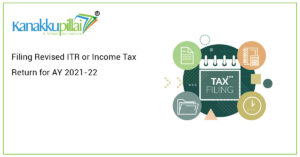![]()
Taxation of Life Insurance
The Central Board of Direct Taxes (CBDT) recently introduced new guidelines that will impact the tax treatment of maturity amounts from life insurance policies purchased on or after April 1, 2023. These guidelines have been implemented following the amendments brought about by Budget 2023, which deem the maturity amount taxable if the premium paid in a financial year exceeds Rs 5 lakh. In this comprehensive article, we delve into the details of the new CBDT rules, the criteria for tax exemption, the implications for policyholders, and the calculation of tax-exempt portions.
The CBDT Circular: A Breakdown
The CBDT’s circular, issued on August 16, 2023, outlines the revised guidelines for calculating tax-exempt maturity amounts from life insurance policies. While the existing tax-exempt status remains intact for policies issued up until March 31, 2023, the guidelines specifically target policies issued after that. Proceeds from unit-linked insurance policies (ULIPs) have separate tax considerations, with taxation applicable since February 1, 2022, if the premium surpasses Rs 2.5 lakh in a fiscal year.
Eligibility for Tax Exemption
The CBDT circular introduces a two-fold eligibility criterion for tax exemption on maturity proceeds:
a) For individual policies: Maturity amounts will remain tax-exempt if the aggregate premium paid during the policy term doesn’t exceed Rs 5 lakhs.
b) For multiple policies: If an individual holds multiple policies, the combined premium payments across all policies should not surpass Rs 5 lakhs to enjoy tax exemption.
Dynamic Premium Payments and Taxation
An important caveat in the guidelines pertains to premium payment fluctuations. If an individual switches the premium payment mode during the policy term (e.g., from annual to semi-annual), causing the aggregate premium payments to exceed Rs 5 lakhs, the maturity proceeds become taxable.
Taxation upon Policyholder’s Demise
It is crucial to note that the new rules do not apply in case of the policyholder’s demise. In such instances, the taxable amount will be categorized under ‘Income from other sources.’
Calculation of Tax-Exempt Portions
The CBDT guidelines provide policyholders with the flexibility to select the life insurance policies for which they wish to claim tax exemption. This means that individuals can choose policies with higher maturity yields for tax exemption while paying taxes on policies with lower maturity amounts.
Illustrative Examples
The CBDT circular offers examples to illustrate how the tax exemption for life insurance proceeds will be calculated. Let’s examine two scenarios:
Example 1:
- Policy X: Issued before April 1, 2023, hence tax-exempt.
- Policies A, B, and C: Issued on April 1, 2023.
- Policies A and B: Tax-exempt as the aggregate annual premium is below Rs 5 lakhs.
- Policy C: Taxable due to an annual premium exceeding Rs 5 lakhs.
Example 2:
- Policy X: Issued on April 1, 2023, with maturity proceeds tax-exempt.
- Policies A, B, and C: Issued on April 1, 2024.
- All policies except X: Maturity proceeds are taxable due to the aggregate annual premium exceeding Rs 5 lakhs.
Considerations for Tax Rate
Maturity proceeds will be subject to taxation based on the individual’s income tax slab rates.
Conclusion
The CBDT’s new guidelines signal a shift in the tax treatment of maturity proceeds from life insurance policies, with a focus on premium payments and policy issue dates. While the tax-exempt status for policies issued before April 1, 2023, remains unaffected, individuals must carefully assess their premium payment strategy to optimize tax exemption on their policies. As the implementation of these guidelines will significantly impact policyholders’ financial planning, seeking advice from financial experts or tax professionals is advisable.





